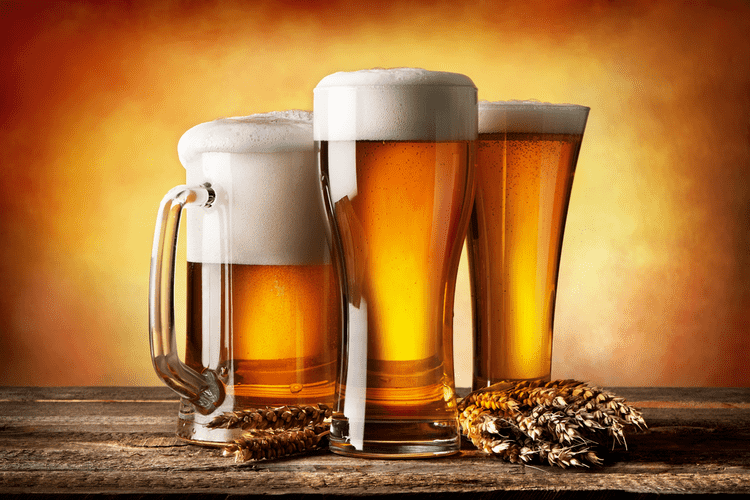Baking soda for drug test The National HIV and STD Testing Resources
Employers, probation officers, or authorities may view such actions as a breach of trust and may take appropriate actions, including potential legal penalties. Even though many people think it’s super easy to get away with faking a urine drug test, it’s a lot harder than you think. Over the past few years, drug screening labs have stepped up to prevent cheating from happening. They can easily tell if a test has been altered or if it’s been faked at all. Many labs will also ask you to remove your coat and empty your pockets before entering the testing room to ensure that you’re not trying to sneak anything in.
Breathalyzer Tests
For example, if you try and fake the test by using someone else’s urine sample, you could get in big trouble. If you’re caught cheating and are applying for a government job, this simple act is considered fraud — a federal offense. Even if the job you’re applying for isn’t within the government, you almost certainly won’t get the job when caught. However, there is a chance that the results could come after you start working.
- People usually believe that sodium bicarbonate cleanses the system.
- Many employers and testing facilities are aware of common evasion tactics and may employ more sophisticated testing methods to detect adulteration.
- Some individuals claim that consuming baking soda can lead to a negative result for certain substances.
- A mixture of acid and alkaline like baking soda in this case, involves a chemical retort and the by product is the releasing of gas.
Expert Insights on Using Baking Soda for Drug Testing
There isn’t one treatment approach or style that will suit everyone. Inpatient rehab and addiction treatment aren’t just about drug use. The goal is to help the patient stop using meth and other substances, but drug rehab should also focus on the whole person’s needs.
However, if you recently smoked marijuana or used other drugs and have been offered a position with a company, chances are you’ll quickly become even more stressed. You might be understandably worried about passing a drug test if you use drugs frequently or occasionally partake in recreational use. Here are a few reasons you should never attempt to fool through drug tests, especially if a job depends on it. Some may delay the drug test until the drugs are flushed out of their system. This process depends on what kind of drugs was taken, as some substances can be flushed out from the body faster than others. Individuals’ height, weight, age, metabolism, and health history are also factors that affect how long a substance takes to leave the body.
Alcohol Withdrawal Night Sweats: Causes, Detox Timeline, and How to Find Relief
But the amount of baking soda claimed on social media is not safe and healthy to use. If the results of the test are positive, it is how to use baking soda to pass drug test recommended that you seek professional medical advice and consider additional testing and treatment options. ” Ultimately, the safest and most legal way to pass a drug test is to not use drugs. If you are struggling with addiction, there are resources available to help you overcome it, such as addiction treatment programs and support groups. The best way to pass a urine drug test for methamphetamine is to not use the drug in the first place. Methamphetamine is a highly addictive and dangerous substance that can have serious negative effects on your health and well-being.
Steps to Perform Baking Soda Detox
Other common adulterants include sugars such as mannitol or inositol, which can be used to dilute the cocaine and increase its volume. Firstly, baking soda is an alkaline substance with a high sodium content. When consumed in excess, it can cause digestive discomfort and affect the heart. The body tries to correct the salt balance by drawing water into the digestive system, which can lead to a condition called hypokalemia, resulting in heart arrhythmias or even cardiac arrest. It involves consuming a lot of water, a sports drink and the sure jell with fruit pectin.
Consuming baking soda will help you pass drug tests if you use meth. The baking soda flush worked well for this Reddit user passing both the home and laboratory drug tests. It may work for instant tests, but it is unlikely to work for lab tests.
- However, the doses suggested on the internet are not safe and can lead to serious health complications, including gastric perforation.
- When someone uses meth, it is absorbed into the bloodstream and distributed throughout the body, where it can be metabolized and eliminated by the liver and kidneys.
- Individuals should consider safer and more reliable methods for managing drug-related issues.
- An abdominal CT revealed free air, and he was taken directly to surgery, where a perforation of the stomach was found, along with peritonitis.
- Many people believe that this common household item can alter the pH levels in urine, potentially affecting the detection of drugs.
It is believed that changing the urine’s pH level will make it more acidic, which could render drug metabolites undetectable by standard drug tests. While baking soda may be touted as a quick fix to pass a drug test, it is neither reliable nor safe. The potential dangers of using large amounts of baking soda far outweigh any possible benefits. It’s important to rely on safer, evidence-based methods such as allowing your body time to detox naturally or using professional detox products. Remember, when it comes to passing a drug test, there is no shortcut to a healthy and responsible approach. Many people turn to DIY methods like baking soda flushes out of desperation, but these approaches are rarely effective and often harmful.
The amount of baking soda purportedly needed varies widely among individuals, but there is no scientifically proven dosage that guarantees passing a drug test. Relying on baking soda for this purpose is highly discouraged due to its potential health risks and lack of effectiveness. Baking soda… At least one of these items is probably in your kitchen. People have been using a long list of very ordinary household items to confuse drug labs hoping to catch them in the act of using or abusing illegal drugs. Yes, it does,” says Amitava Dasgupta, Ph.D., a professor of pathology and drug testing expert from the University of Texas-Houston Medical Center.
Ultimately, the best approach to passing a drug test is to refrain from drug use altogether. Individuals concerned about drug testing should consider the potential implications of their choices and seek professional help if necessary. Emphasizing a commitment to health and well-being is a more sustainable and responsible strategy than attempting to circumvent testing protocols. The most reliable method to pass a drug test is to abstain from drug use.
It follows that baking soda is not scientifically proven that it will help you pass a drug test, which suggests that you are not safe using it even for amphetamines. The Ohana luxury drug treatment center offers evidence-based and holistic treatment programs designed to help individuals break free from substance use in a safe and supportive environment. Applying for jobs and going on interviews can be pretty stressful.
People have been using a long list of very ordinary household items to confuse drug labs, hoping to catch them in the act of using or abusing illegal drugs. However, such practices can lead to adverse health effects, including metabolic alkalosis, dehydration, and gastrointestinal distress. Most drug testing machines have the ability to detect specimens with chemicals, tagging them as invalid. Chemicals, such as Visine eye drops, isopropanol, and other chemicals, still cannot be detected.
Additionally, attempting to manipulate drug test results through methods like the baking soda approach can have legal consequences. It is considered unethical and may be viewed as a breach of trust by employers, probation officers, or authorities, potentially leading to legal penalties. Secondly, in rare cases, consuming large amounts of baking soda can lead to a large accumulation of gas in the stomach, causing it to rupture. This is more likely to occur after consuming a large amount of food or alcohol.




